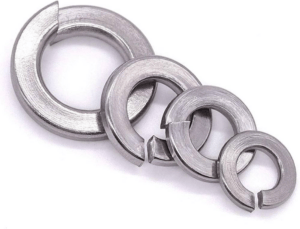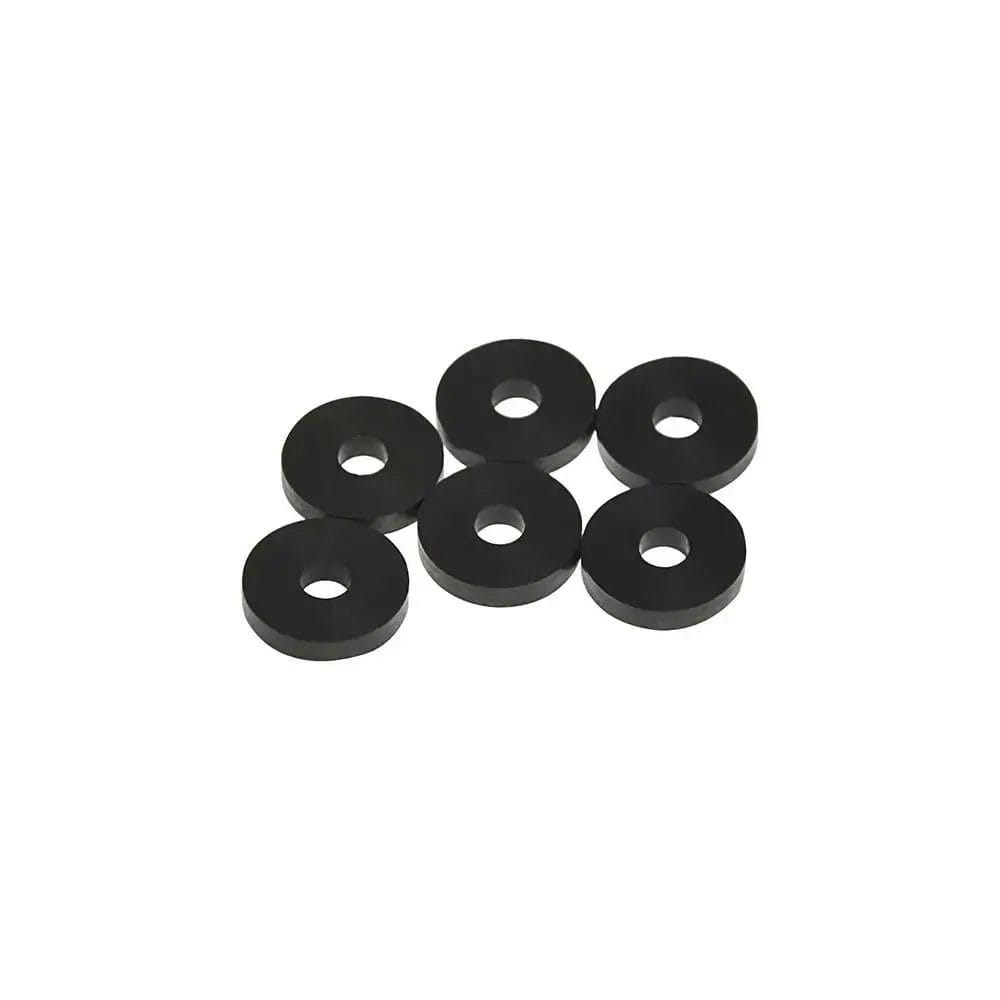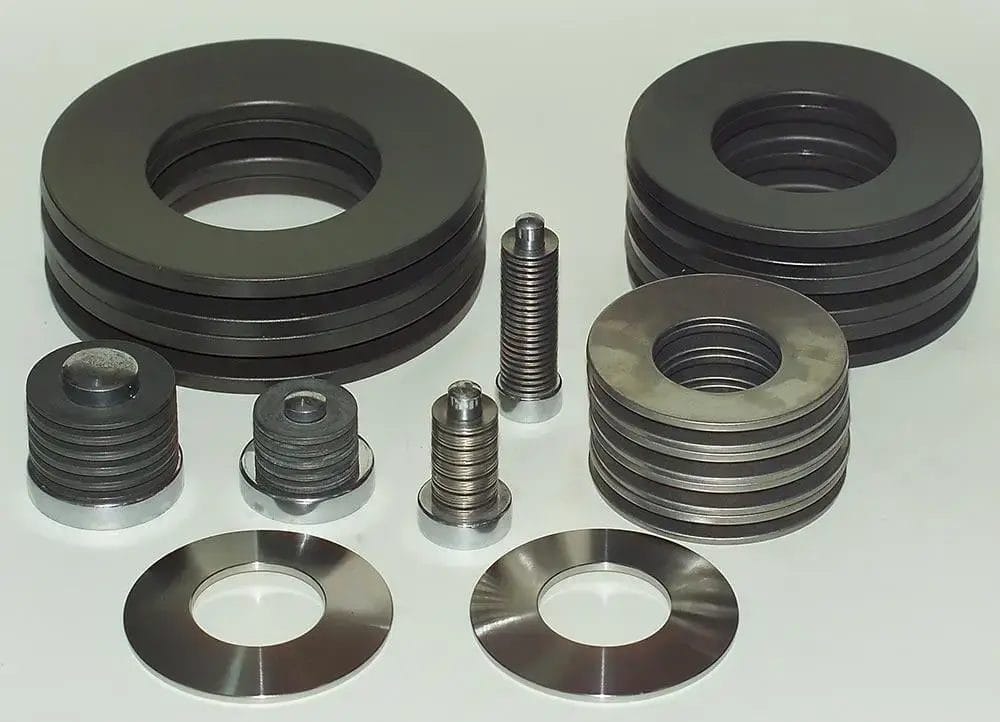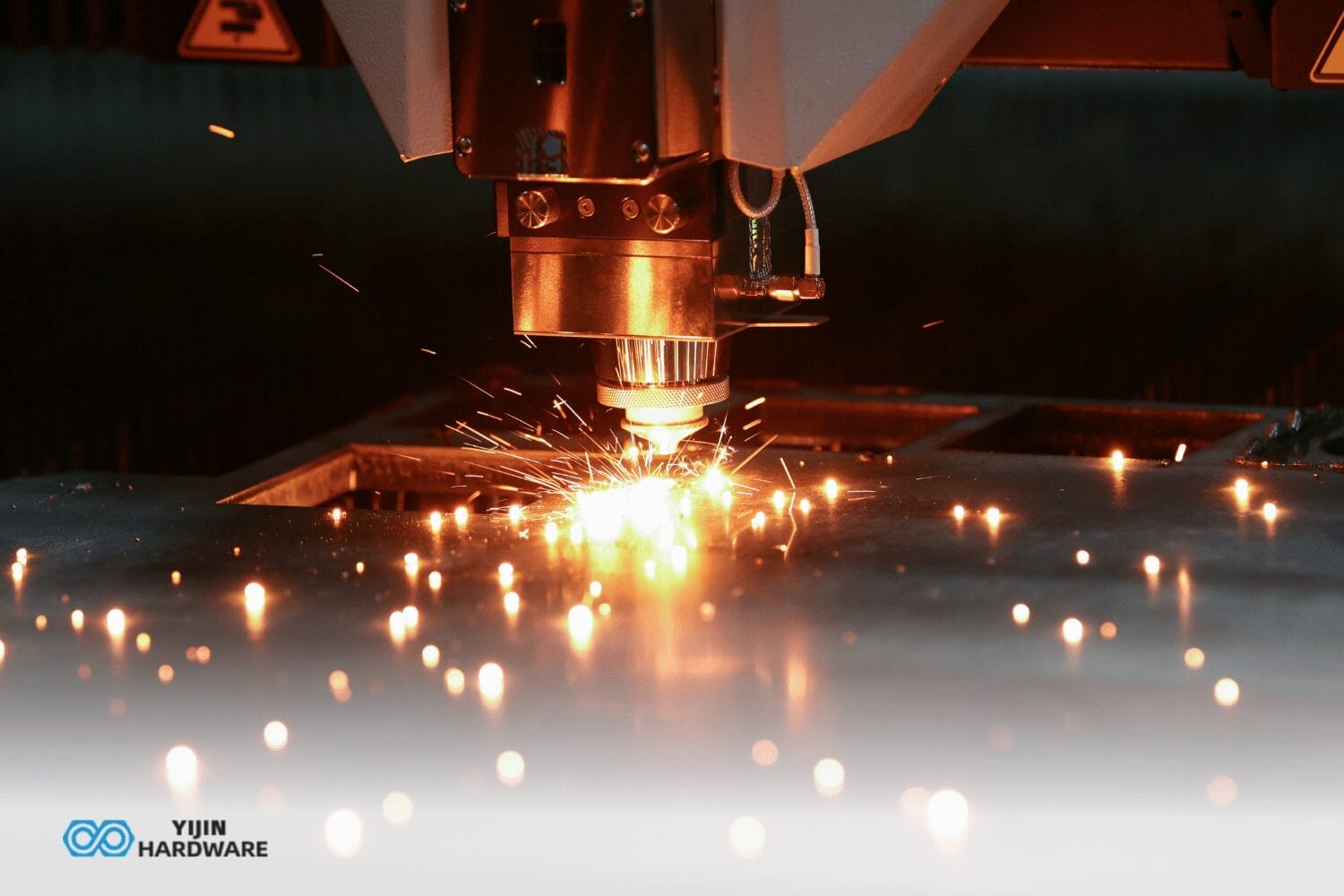For fastening applications, selection of the right washer can mean the difference between a costly failure or a successful project. Therefore, it’s very important to know the differences between flat washers and spring washers. This knowledge helps professionals in the construction and engineering industries to maximize the safety, reliability and proficiency of their projects.
Today we will give you a complete overview of flat washers and spring washers. We will know about their characteristics, applications and selection criteria. By the end of this article, you will be equipped with the knowledge to choose the best washer for your particular needs.
What is A Flat Washer?
Flat washers are disc-shaped, thin parts with a central hole. They’re designed to protect surfaces, diffuse load and give a smooth bearing surface. They come in many different types like USS, SAE and hardened versions.
Manufacturers make flat washers using materials such as steel, brass, and stainless steel. Every material has particular properties for different uses. These versatile fasteners are very important in many assembly situations in multiple industries. For those looking to source large quantities of fasteners, bolts and nuts wholesale can provide a cost-effective solution for your ongoing projects
What is A Spring Washer?

Spring washers are different from flat washers in their non-flat design. This design permits axial deflection. These engineered fasteners supply vibration and tension resistance in bolted joints. Common types of spring washers are Belleville, split and wave washers. Each has special mechanical characteristics. Spring stainless steel and steel are usually used as they have great corrosion resistance and elasticity.
Spring washers are good at maintaining bolt tension and compensating for thermal growth. This makes them perfect for high-performance operation. You’ll mostly see them in industrial machines, car suspensions and aerospace machinery.
Flat Washers vs Spring Washers: Main Differences
After knowing about the basics of flat and spring washers, let’s examine their distinguishing characteristics.
Shape and design
Flat washers sustain a consistent flat surface and thickness. This thickness is usually between 0.5mm and 3mm. This structure spread the load equally over a wide area. In contrast, spring washers have non-flat designs that permit axial compression. Their special shapes such as the cone-like spiral-formed split washers or Belleville washers let them compress under pressure.
Mechanical properties
Under load flat washers show little elastic deformation to keep their original form. They equally disperse stress across their surface area and mainly handle pressures up to 30,000 psi.
Spring washers are formed for controlled elastic deformation. Their nonlinear load deflection property lets them release and absorb energy. This property increases their fatigue resistance with some spring washers that encounter over 1 million compression cycles. It is important in situations where unstable vibrations and loads are involved.
Vibration resistance capabilities
Flat washers give little built-in vibration resistance and depend mainly on friction to keep joint integrity. Their effectiveness decreases in vibration-prone environments and possibly loosens at frequencies as low as 10 Hz.
Spring washers actively dampen vibrations. Their elastic nature absorbs vibrational energy and preserves bolt tension even under high-frequency vibrations up to 2000 Hz. This is particularly important in operations like industrial machines or automotive engines.
Advantages and Disadvantages of Flat and Spring Washers

To gain detailed knowledge about these fasteners, we’ll now weigh their advantages against their disadvantages.
Flat Washers
Flat washers spread out loads well that distribute forces over areas up to 300% bigger than the bolt diameter. This greatly decreases stress concentrations. On softer materials, they’re good at minimizing surface damage. They can handle pressures up to 30,000 psi without deforming.
Because of their smooth contact surface, flat washers increase the stability of the material. They can redeem small surface roughness up to 0.5mm. Large-scale uses benefit from their low cost, with bulk prices as little as $0.01 each.
But flat washers also have some disadvantages. Their vibration resistance is low which possibly results in loosening under dynamic loads over 10 Hz. High-vibration situations may need extra locking mechanisms which can increase assembly cost and complexity.
Spring Washers
Spring washers maintain tension in bolted joints up to 2000 Hz frequency. This is why they are great in vibration resistance. Their ability to release and absorb energy allows them to compensate for thermal contraction and expansion. This preserves joint firmness from -40°C to 120°C. Assemblies needs exact preload control benefit from their axial flexibility. Some models give load capacities from 71 N to 55,600 N.
Spring washers have some limits also. Their intricate shape can increase stress concentrations. This can cause fatigue issues in high-cycle operations if cycles exceed 1 million. They disperse loads over smaller areas compared to flat washers which mostly cover only 1.5 times the bolt diameter. They usually cost 3 to 5 times more than flat washers because of their complicated manufacturing process.
Comparison Table:
| Aspect | Flat Washers | Spring Washers |
| Vibration Resistance | Minimal (effective up to 10 Hz) | Superior (effective up to 2000 Hz) |
| Surface Protection | High (up to 30,000 psi) | Moderate (potential for stress concentration) |
| Versatility | Broad range of applications | Customized applications |
| Cost-effectiveness | High ($0.01 per unit in bulk) | Moderate (3-5 times more high-priced) |
| Load Distribution | Perfect (up to 300% of bolt diameter) | Limited (usually 150% of bolt diameter) |
| Thermal Compensation | Limited | Perfect (-40°C to 120°C range) |
| Fatigue Resistance | High | Moderate (potential issues over 1 million cycles) |
| Preload Control | Limited | Accurate (71 N to 55,600 N range) |
| Additional Locking | Usually required | Generally not needed |
| Ease of Installation | Simple | May require particular orientation |
Industry Applications
Flat and spring washers are used in multiple industries. Let’s discuss their uses in some of the industries.
Flat Washers
The cost-effectiveness and flexibility of flat washers make them very important in many different industries.
Construction and General Fastening
Flat washers have an important role in steel beam connections where they scatter loads up to 30,000 psi over larger areas. They’re very useful in roof trusses to stop wood splitting by dispersing bolt pressure. Flat washers also have an important function in concrete anchoring systems where they diffuse the anchor bolt’s load. It gives protection against concrete cracking under high tensile strength up to 150,000 N.
Plumbing

Pipe flange connections benefit from flat washers which guarantee equal gasket compression and uphold joint integrity from -40°C to 120°C system operations. These washers are also required for watertight seals in plumbing. They prevent leaks in faucet installations under 80 psi pressure.
Woodworking

In furniture making, flat washers protect softwood from damage. It stops screws from sinking into the wood. It also preserves joint strength under loads up to 500 kg. Deck makers use these washers to resist moisture around fasteners which almost adds 5 years to deck life.
Spring Washers
While flat washers are great in static uses, spring washers are good in dynamic environments.
Aerospace
Important fastening situations in the aerospace industry usually involve spring washers. Split lock washers stop loosening in fuselage panel attachments under high-altitude vibrations up to 2000 Hz. Despite high temperature that changes from -54°C to 300°C, conical spring washers in aircraft engine mounts maintain bolt tension.
Industrial Equipment

Heavy industrial machines profit from spring washers’ vibration-resistant properties. In mining machinery, crusher units use Belleville washers to uphold joint soundness under loads up to 55,600 N. Wind turbines use disc spring stacks in blade pitch mechanisms. It permits large deflections while keeping stable torque for more than 20 years of use.
Automotive and Machinery Assemblies

Belleville washers keep exact preload in automotive engine valve parts and go through high-frequency vibrations up to 2000 Hz. Suspension systems use these washers to take in road shocks to increase ride comfort. Machine tools use wave washers in spindle configurations to balance out thermal expansion across temperature ranges from -40°C to 120°C. It guarantees stable accuracy while operating.
Factors to Consider When Choosing the Right Washer
The selection between flat and spring washers involves a careful evaluation. Here are the important factors that will guide you to better decisions.
Corrosion resistance requirements
Environmental factors are important for a washer’s lifespan. Both flat and spring stainless steel washers resist corrosion in harsh conditions. For extreme environments, special coatings can handle up to 1000 hours of salt spray testing. Assess your environmental challenges to pick the right material.
Application-specific load requirements
The choice of washer will depend on load requirements. Flat washers are proficient in static loads that are up to 30,000 psi. On the other hand, spring washers handle dynamic loads from 71 N to 55,600 N. Consider your particular force distribution needs before selecting.
Cost-effectiveness and longevity considerations
The balance of upfront price with long-term profits needs to be considered. While spring washers cost 3 to 5 times more than flat washers, their vibration resistance can increase fastener life up to 300%. Assess your budget with expected service life to learn the most cost-effective compound.
Vibration and shock exposure
Spring washers are better in high-vibration settings. They stay effective at frequencies up to 2000 Hz. Flat washers may be enough for low-vibration uses under 10 Hz.
Installation and maintenance accessibility
Flat washers permit faster installation because of their simplicity. Spring washers may need a certain inclination that can increase installation time by 15 to 30 seconds per fastener. This affects long-term productivity, so think these factors carefully.
Fastener material compatibility
Materials must be compatible for best performance. Galvanic corrosion can arise when different metals contact. For example, you should use stainless steel washers with stainless bolts to decrease risks of corrosion.
Conclusion
The choice between flat and spring washers depends on your particular needs. Factors like vibration resistance, environmental conditions and load dispersion should guide your decision. The detail of each type’s strengths and limits guarantees the best project success and fastener performance as well.
For custom fasteners, nuts, bolts and washers matched to your requirements, consider Yijin Hardware. Reach out to us today to discuss your custom fastener needs and increase your project’s performance.








